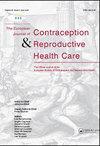How often is oral contraception used for contraception? The need of benefit's formalisation.
IF 1.9
4区 医学
Q3 OBSTETRICS & GYNECOLOGY
European Journal of Contraception and Reproductive Health Care
Pub Date : 2023-04-01
DOI:10.1080/13625187.2023.2170711
引用次数: 0
Abstract
Since its introduction in the early 1960s, the oral contraceptive pill has been taken by millions of women. The pill has allowed women to independently determine their reproductive life, relieving them from the burden of unwanted pregnancies. The social impact has been enormous, with women now achieving higher education levels and being able to fulfil their career and social ambitions. Even though other contraceptives methods have since been developed, some with superior efficacy [1], the pill remains one of the most used contraceptive methods throughout the world and the most used in Europe [2,3]. Every time our mind turns to contraception, the first method we think of is the pill. However, there may be other reasons why it is so commonly prescribed today. As physicians, we all know that the hormones contained in the pill can help treat many ailments afflicting women. These non-contraceptive benefits are outlined in scientific papers [4,5], but are not mentioned in leaflets provided with the pill, nor are they sufficiently considered in scientific debates focussed on the risks associated with the use of oral contraception. Still noncontraceptive benefits are displayed on public websites (for example https://www.webmd. com/sex/birth-control/other-benefits-birth-control or https:// www.Healthline.com/health/birth-control-benefits), and likely considered by the woman who choose a contraceptive method [6–8]. How much non-contraceptive benefits account for pill prescription rates is unclear, particularly in Europe. However, some insight on this issue is given by a recent post-marketing study, designed to evaluate the efficacy and cardiovascular safety of micronized oestradiol 1.5mg and nomegestrol acetate 2.5mg vs. other oral contraceptive pills [9,10]. The study was performed between 2010 and 2021, on 91,313 women, recruited in Russia (n1⁄4 36,092; 39.5%) Italy (n1⁄4 19,683; 21.6%), Hungary (n1⁄4 9,407; 10.3%), Spain (n1⁄4 8,656; 9.5%), Poland (n1⁄4 6,263; 6.9%), Germany (n1⁄4 4,712; 5.2%), France (n1⁄4 580; 0.6%), Sweden (n1⁄4 517; 0.6%) and Austria (n1⁄4 462; 0.5%). At enrolment, physicians recorded the reason why they were prescribing the oral contraceptive pill, either: 1. for contraception only; 2. for contraception and therapeutic reasons; 3. for therapeutic reasons only. The Italian company marketing the pill under investigation (Theramex Italy SRL, Milan, Italy) provided datasets for the entire study and for the Italian cohort, separately (data on file). Overall, the pill was prescribed for contraception alone in 56.5% of cases, and for therapeutic reasons in 42.5%, either with (33.5%) or without additional contraceptive purposes (9.1%). In Italy, the pill was prescribed for contraception alone in 38.8% of cases, and for therapeutic reasons in 61% of cases, either with (44.2%) or without additional contraceptive purposes (16.7%). The reasons for non-contraceptive prescription was stated as: treatment of cycle irregularity (44.3%), menstrual pain (39.5%), heavy or prolonged menstrual bleeding (25.5%), acne (9.0%), ovarian cysts (8.2%), polycystic ovary syndrome (6.2%), premenstrual syndrome (5.3%), and endometriosis (5.0%). These results are like those obtained in the USA almost a decade ago [11], and in line with surveys, showing the non-contraceptive benefits being sought by about 50–60% of women [6–8]. With very few exceptions, contraceptive pills are licenced for contraception alone, but as these figures show, in almost half of cases in Europe, and 61% of cases in Italy, they are prescribed to treat reproductive disorder symptoms. Ten to 20% of oral contraceptive prescriptions are given for therapeutic reasons alone. This data reveals a clear dichotomy between the indication for which an oral contraceptive pill is licenced and the way it is commonly used. It seems that physicians are more aware than the regulatory agencies of the therapeutic potential of oral contraceptives. Likely the same applies to other forms of combined hormonal contraceptives such as the vaginal ring or the patch [12,13]. The widespread use of the pill, for therapeutic reasons is a clear indication of its non-contraceptive efficacy. However, it is highly unlikely that any pharmaceutical company would decide to set up the large, randomised, placebo-controlled studies that would be necessary to receive formal therapeutic indications. Yet modern statistics, like network metanalyses, may be a means of obtaining solid data on the therapeutic potential of the pill. This may place the pill or other hormone contraceptives in a different light. Therapeutic effects on disturbances that are sometimes destructive of woman quality of life, can give a different balance to the side effects or the adverse events that may eventually occur during the administration of hormonal contraceptives. As the data shows, doctors are exploiting the “unofficial” therapeutic properties of the pill on a massive scale. Their decision to do so is balanced by the often-dramatic effects on women’s quality of life. But what happens on the, admittedly rare, occasion that a harmful side effect emerges? How can the doctor defend themselves in the courts if they are prescribing “off-label”? Modern medicine should be evidence-based, and therefore evidence of efficacy must be formalised. Scientific societies should resolutely ask for this formalisation.口服避孕药的使用频率是多少?利益正规化的需要。
本文章由计算机程序翻译,如有差异,请以英文原文为准。
求助全文
约1分钟内获得全文
求助全文
来源期刊
CiteScore
3.70
自引率
11.80%
发文量
63
审稿时长
>12 weeks
期刊介绍:
The Official Journal of the European Society of Contraception and Reproductive Health, The European Journal of Contraception and Reproductive Health Care publishes original peer-reviewed research papers as well as review papers and other appropriate educational material.

 求助内容:
求助内容: 应助结果提醒方式:
应助结果提醒方式:


